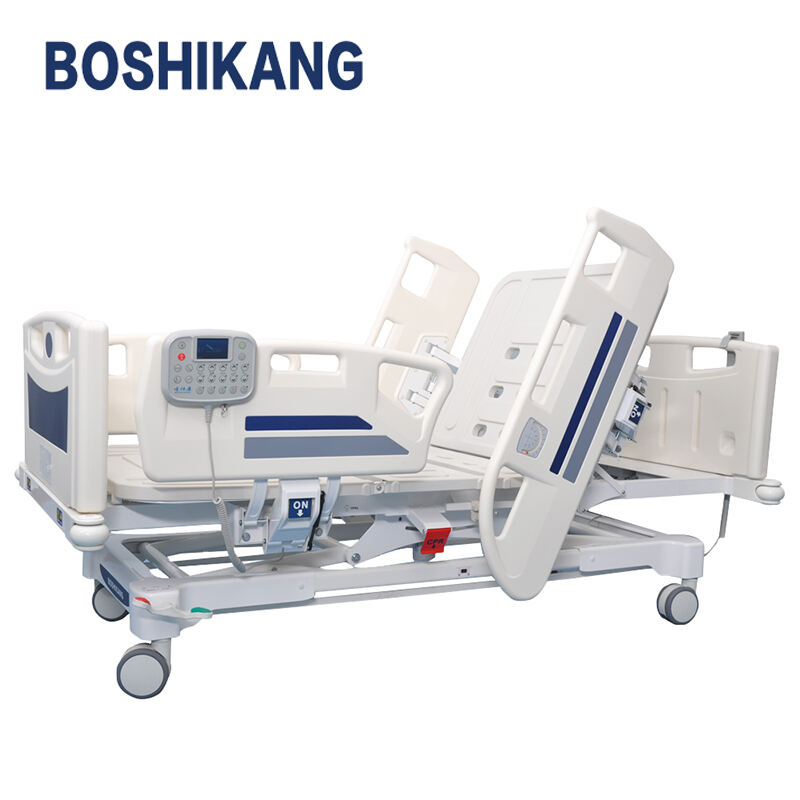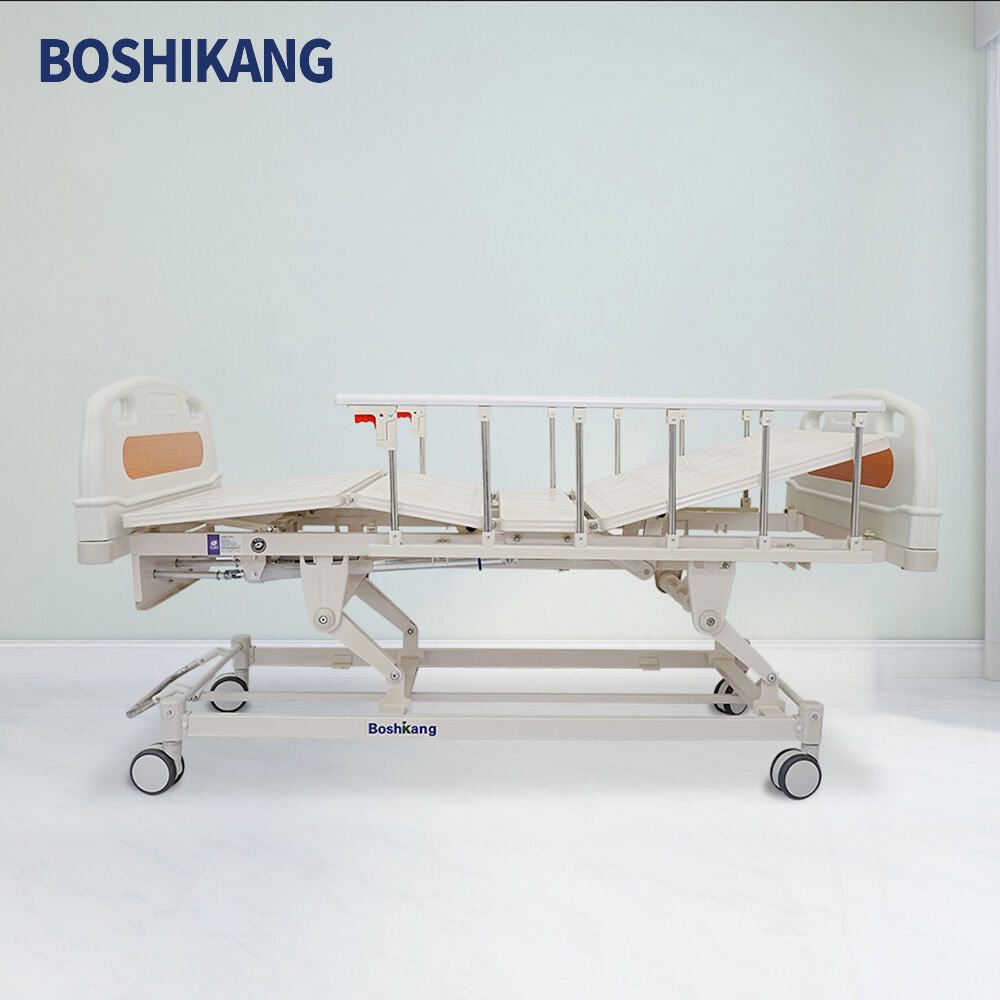In the rapidly evolving landscape of modern healthcare, medical beds serve as the foundation for patient care and recovery. These specialized pieces of equipment have transformed from simple resting platforms into sophisticated therapeutic tools that enhance patient outcomes while supporting healthcare professionals in delivering optimal care. The integration of advanced technology and ergonomic design in contemporary medical beds has revolutionized how hospitals, clinics, and long-term care facilities approach patient treatment and comfort.

Advanced Features Transforming Patient Care
Electric Positioning Systems
Modern medical beds incorporate sophisticated electric positioning systems that allow precise adjustment of head, foot, and overall bed height. These mechanisms enable healthcare providers to position patients optimally for various medical procedures, examinations, and therapeutic interventions. The ability to adjust positioning electronically reduces physical strain on nursing staff while ensuring patients achieve the most comfortable and medically appropriate positions for their specific conditions.
Electric positioning systems also contribute significantly to patient independence and dignity. Patients who retain some mobility can adjust their positioning using bedside controls, reducing their dependence on healthcare staff for basic comfort adjustments. This autonomy proves particularly valuable in rehabilitation settings where encouraging patient participation in their care promotes faster recovery and improved psychological well-being.
Integrated Safety Mechanisms
Contemporary medical beds feature comprehensive safety systems designed to prevent patient falls and injuries. Side rails with multiple positioning options provide customizable protection levels based on individual patient needs and mobility status. These safety features include lockable wheels, emergency lowering capabilities, and weight-activated alarms that alert staff to unauthorized movement or potential fall risks.
Advanced safety mechanisms extend beyond basic fall prevention to include pressure redistribution systems that help prevent bed sores and skin breakdown. These integrated features monitor patient positioning and automatically suggest or implement minor adjustments to maintain optimal pressure distribution across the body, particularly crucial for patients with limited mobility or extended bed rest requirements.
Clinical Benefits and Therapeutic Applications
Enhanced Treatment Delivery
The design and functionality of modern medical beds directly impact the quality of medical treatment delivery. Specialized beds equipped with built-in scales allow healthcare providers to monitor patient weight without requiring transfers to separate weighing equipment. This capability proves essential for patients in intensive care units or those with mobility limitations where frequent weight monitoring is medically necessary.
Therapeutic positioning capabilities enable medical beds to support various treatment protocols. For respiratory therapy, beds can achieve specific angles that optimize lung expansion and drainage. Cardiac patients benefit from positioning options that reduce cardiac workload while maintaining circulation. These therapeutic applications demonstrate how medical beds function as active treatment tools rather than passive furniture pieces.
Infection Control and Hygiene
Modern healthcare environments demand rigorous infection control measures, and medical beds play a crucial role in maintaining sterile conditions. Contemporary bed designs incorporate materials and finishes that resist bacterial growth while facilitating thorough cleaning and disinfection protocols. Smooth surfaces without crevices or joints minimize areas where pathogens might accumulate, supporting comprehensive sanitation efforts.
Removable and washable components allow thorough decontamination between patients without compromising bed functionality. These design features prove particularly important in intensive care units and isolation rooms where infection control measures require the highest standards. The ability to maintain sterile conditions while preserving advanced functionality ensures patient safety without sacrificing therapeutic capabilities.
Staff Efficiency and Ergonomic Considerations
Reducing Physical Strain on Healthcare Workers
Healthcare professionals face significant physical demands during patient care activities, and well-designed medical beds substantially reduce workplace injuries and strain. Height-adjustable features allow staff to position beds at optimal working levels for various tasks, from routine care to complex procedures. This adjustability prevents repetitive stress injuries and reduces the risk of back injuries that commonly affect healthcare workers.
Electric controls for bed positioning eliminate the need for manual cranking or lifting, reducing physical exertion required for patient repositioning. These ergonomic improvements enable healthcare staff to focus their energy on patient care rather than equipment manipulation, ultimately improving both job satisfaction and patient outcomes through more attentive care delivery.
Workflow Optimization
Efficient medical bed design contributes to streamlined healthcare workflows by reducing the time required for routine patient care tasks. Quick-release mechanisms for bed components allow rapid setup changes for different medical procedures or patient transfers. Integrated storage solutions keep essential supplies within easy reach while maintaining organized work environments.
Technology integration in modern medical beds supports digital healthcare initiatives by incorporating connectivity features that link with electronic health records and monitoring systems. This integration reduces documentation time while improving accuracy of patient data collection, allowing healthcare providers to spend more time on direct patient interaction and clinical decision-making.
Economic Impact and Healthcare Sustainability
Cost-Effectiveness in Healthcare Operations
Investment in high-quality medical beds generates substantial long-term cost savings for healthcare facilities through reduced patient complications and shorter recovery times. Prevention of pressure ulcers alone can save thousands of dollars per patient by avoiding extended treatment costs and potential legal liabilities. The therapeutic benefits of proper positioning and comfort contribute to faster healing and reduced length of stay.
Durability and reliability of modern medical beds reduce replacement costs and maintenance expenses over their operational lifetime. Quality construction materials and precision engineering ensure consistent performance even under intensive use conditions typical in busy healthcare environments. This reliability translates to reduced downtime and maintenance costs while ensuring continuous availability for patient care.
Supporting Healthcare Facility Accreditation
Healthcare accreditation bodies evaluate facilities based on their ability to provide safe, effective patient care, and medical bed quality plays a significant role in meeting these standards. Accreditation requirements often specify minimum standards for patient safety equipment, and advanced medical beds help facilities exceed these baseline requirements while demonstrating commitment to patient welfare.
Documentation capabilities integrated into modern medical beds support quality assurance programs required for accreditation maintenance. Automatic logging of patient positioning, weight changes, and safety incidents provides objective data for quality improvement initiatives and regulatory compliance reporting, streamlining administrative requirements while supporting clinical excellence.
Future Innovations and Technology Integration
Smart Healthcare Connectivity
Emerging technologies are transforming medical beds into intelligent healthcare platforms that integrate seamlessly with hospital information systems and patient monitoring networks. Internet of Things connectivity enables real-time data collection about patient positioning, vital signs monitoring, and bed utilization patterns that support evidence-based care decisions and operational efficiency improvements.
Artificial intelligence integration promises to revolutionize how medical beds support patient care by predicting optimal positioning schedules, identifying potential complications before they develop, and automatically adjusting settings based on individual patient responses. These technological advances represent the next evolution in medical bed functionality, moving toward truly personalized patient care experiences.
Sustainable Design and Environmental Considerations
Environmental sustainability increasingly influences medical bed design as healthcare facilities seek to reduce their ecological footprint while maintaining high care standards. Manufacturers are developing beds using recycled materials and energy-efficient components that minimize environmental impact throughout their lifecycle while preserving performance and safety characteristics.
Modular design approaches allow individual components to be replaced or upgraded without requiring complete bed replacement, reducing waste while enabling facilities to incorporate new technologies as they become available. This sustainable approach balances environmental responsibility with the practical need for continuous technological advancement in healthcare equipment.
FAQ
What makes medical beds different from regular beds
Medical beds differ significantly from regular beds through their specialized features designed for healthcare environments. They include electric positioning systems, safety mechanisms like side rails and wheel locks, infection-resistant materials, and therapeutic positioning capabilities. These beds also integrate with healthcare technology systems and meet strict safety and hygiene standards required in medical settings.
How do medical beds improve patient recovery outcomes
Medical beds enhance recovery through precise positioning that optimizes circulation, respiratory function, and pressure distribution. They prevent complications like bed sores and blood clots while enabling patients to participate more actively in their care through easy position adjustments. The comfort and safety features reduce anxiety and promote better sleep quality, which accelerates healing processes.
What safety features should healthcare facilities prioritize in medical beds
Essential safety features include adjustable side rails with secure locking mechanisms, emergency lowering capabilities, weight-activated alarms, and lockable wheels. Advanced safety systems should include pressure redistribution monitoring, fall prevention alerts, and backup power systems for electric functions. These features work together to create comprehensive patient protection throughout their care experience.
How do medical beds support healthcare staff efficiency
Medical beds improve staff efficiency through height adjustability that reduces physical strain, electric positioning controls that eliminate manual effort, and integrated storage solutions that keep supplies accessible. Technology integration streamlines documentation and monitoring tasks, while ergonomic design features prevent workplace injuries and reduce the time required for routine patient care activities.


